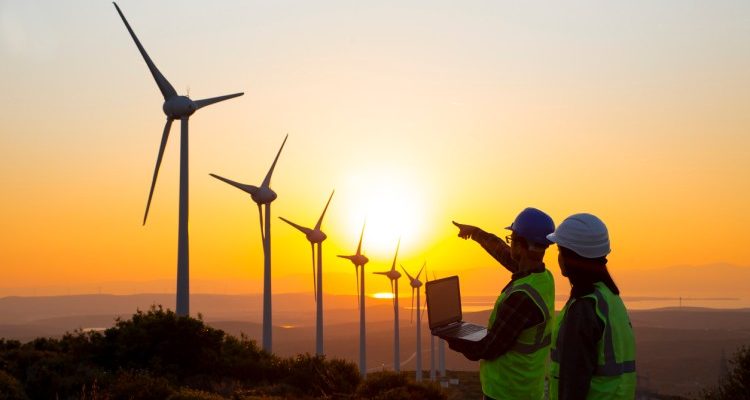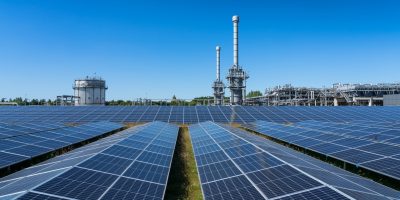Utilizing energy resources wisely is necessary for sustainable development since they are essential to modern civilization. When thinking about economic development, renewable energy (RE) sources like solar, wind, biomass, etc., are of the utmost importance.
The market for renewable energy, which was assessed at $928.0 billion globally in 2017, is anticipated to increase at a compound annual growth rate (CAGR) of 6.1% from 2018 to 2025, reaching $1512.3 billion.
Renewable energy technologies transform energy from many natural sources, such the sun, wind, tides, and others, into forms that may be used, like electricity.
Winds of change blowing globally
The biggest floating wind farm in the world, Kincardine, off the coast of Scotland, with five enormous Vestas V164-9.525 MW turbines.
Eight EU nations bordering the Baltic Sea made a commitment in August to raise offshore wind power generating capacity from the existing 2.8 GW, the majority of which is in Danish and German seas, sevenfold by 2030.
In September, the Biden administration in the US launched the Floating Offshore Wind Shot, adding fuel to the renewable energy industry’s fires. It plans to grow capacity to 15 GW by 2035, enough to power 5 million households, and “lower the prices of floating technologies by more than 70% by 2035, to $45 per megawatt-hour.”
Comparing floating and fixed-bottom offshore wind farms
The biggest fixed-bottom offshore wind farm in the world, Hornsea 2, went into full operation in September and is located off the coast of Yorkshire in the UK. Kincardine may be the largest floating wind farm in the world.
The 165 wind turbines at Hornsea 2, which is operated by Danish energy pioneer rsted and is located adjacent to Hornsea 1, its elder brother, can power 2.5 million households and help the UK government reach its objective of 50 GW in offshore wind capacity by 2030.
China will continue to set the pace for the development of renewable energy
China is well on its way to meeting its goal of obtaining 33% of its power needs from renewable sources.
It still contributes about a third of the world’s greenhouse gas emissions, but it is working to lessen its carbon footprint via policy and action. In 2021, about 70% of the increase in wind energy came from China.
As the nation implements its Five Year Plan to lessen its reliance on fossil fuels and boost domestic renewable energy generation and consumption, this tendency will continue to climb.
Cost increases may impede growth
The cost of materials has been one of the major obstacles to the deployment of new renewable energy projects until 2022. The cost of building new projects in remote locations has increased as a result of growing prices for fossil fuels, power, and transportation.
Between 2021 and 2022, the price of PV-grade polysilicon climbed by 400%, that of steel by 50%, and that of copper by 70%, driving the cost of onshore wind facilities up to 25%.
Solar is still the market leader
The industry is seeing rapid growth, with China, the US, Japan, Germany, and India leading the pack. Around the world, new solar projects are being constructed to take use of this type of energy; Germany is concentrating on solar energy in its largest-ever industrial boom.
Iraq is to start 5 GW of solar projects in 2023, and the UK’s NTR Renewables is building Europe’s largest solar farm on a former landfill. The current aspect is much considerable for those who are looking for Wind Energy Jobs and thinking to get started for their career to expand.
Costs for biofuel will stay high
Due to higher feedstock prices and higher diesel prices, the situation in Ukraine has a significant impact on biofuel costs as well.
Early in the year, the IEA revised its expectations for the increase of the biofuel demand to 3% in 2023, and with no sign of a resolution to the dispute, the volatility persists and makes forecasting challenging.
The market for energy storage is expanding
In 2023, there will be a significant emphasis on energy security due to the continuous expansion of the electric vehicle (EV) sector. The number of electric vehicles (EVs) expected to be in use by 2036 is 836 million, and the infrastructure and technology needed to power them will increase at a similar rate.
According to Bloomberg, home energy storage battery capacity for EVs will increase to 155 GWh by 2030, expanding 30% yearly.
Conclusion
Predictions beyond 2023 are challenging due to the global energy market’s continued high volatility, which is caused by events such as the global recession, energy crises, climate policy, and conflict.
Also there are vast number of opportunities in Solar Energy Jobs & Wind Energy Jobs if anyone is considering their career in solar or wind energy sector. In general, we anticipate that escalating costs and erratic demand will balance out technological and legislative advancements in renewable energy sources.














Comments